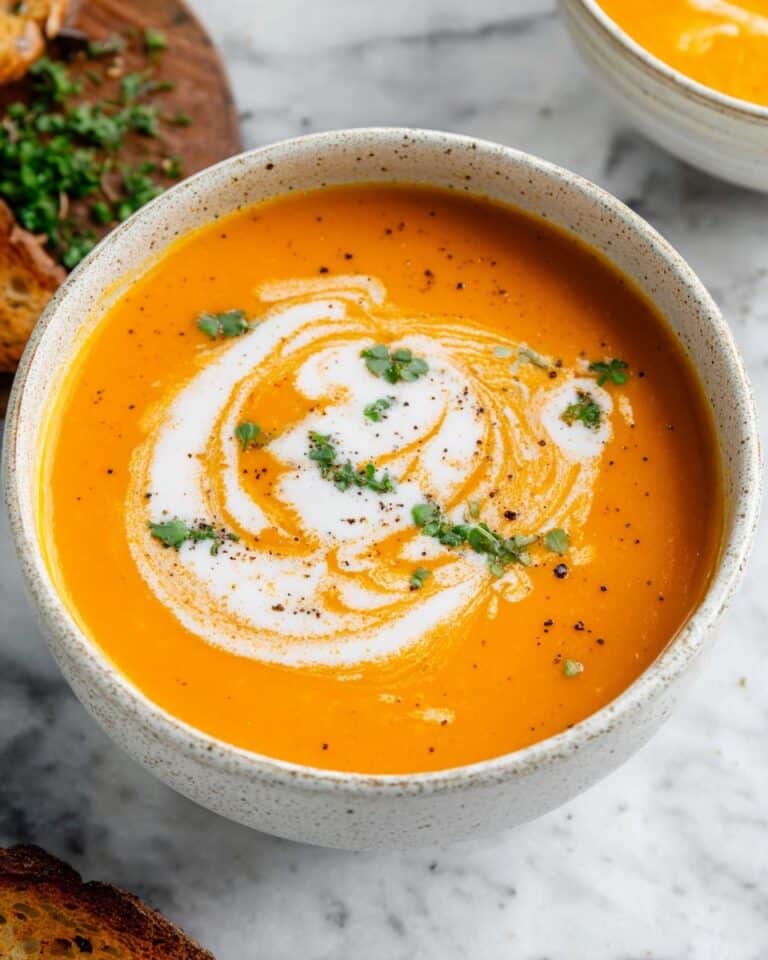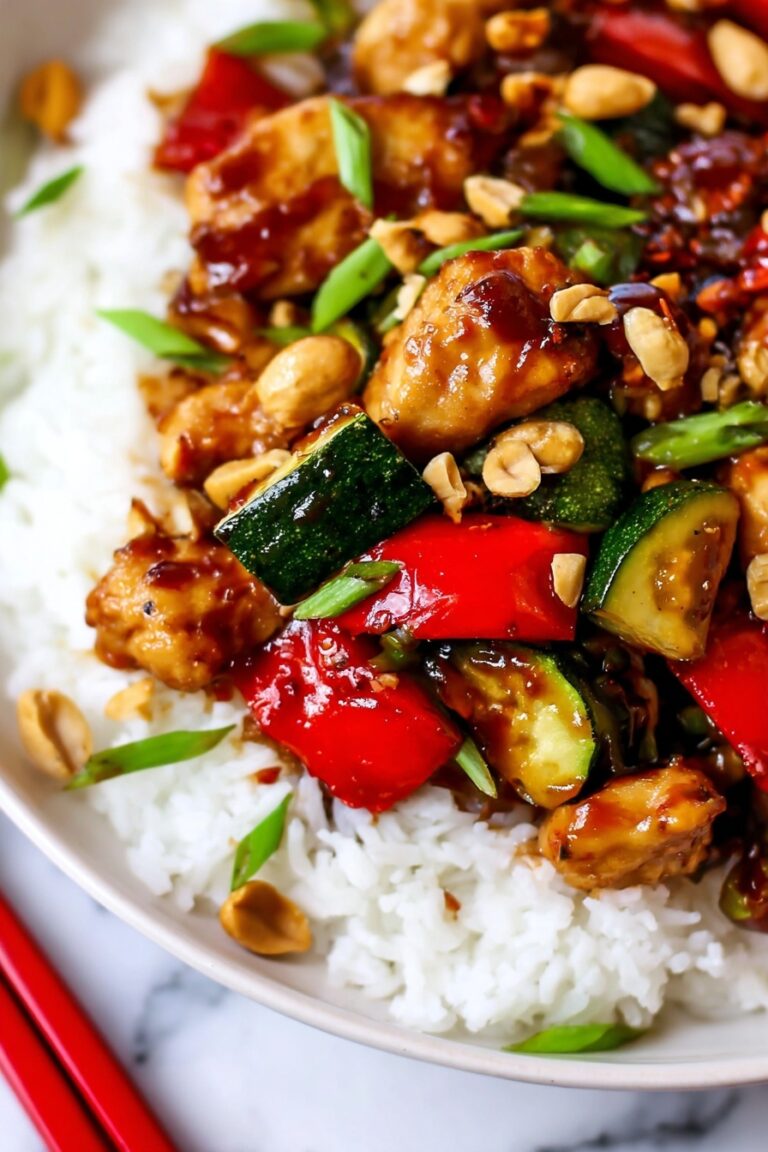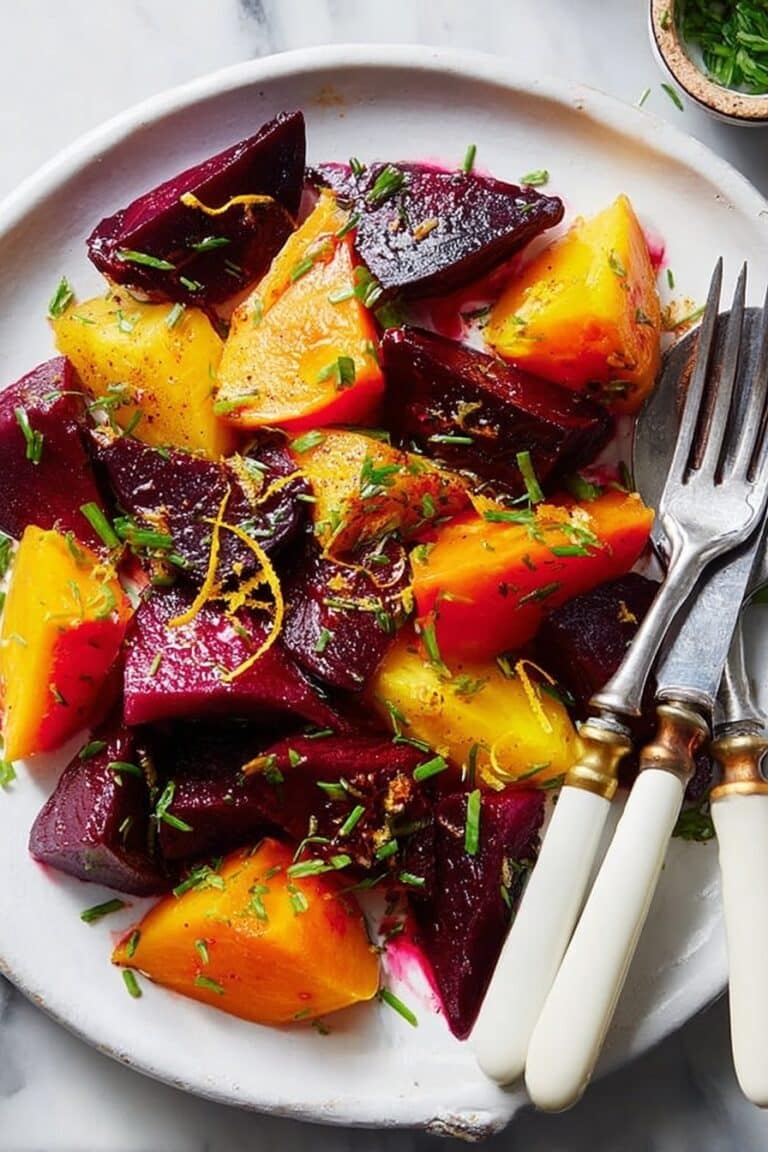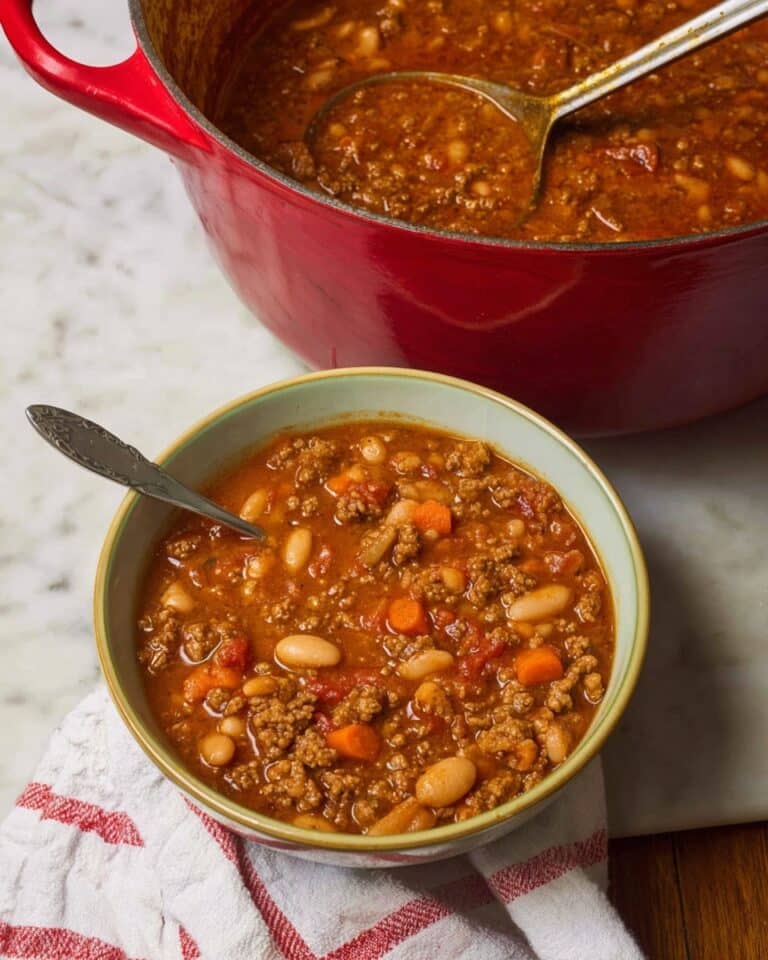Ginisang Munggo (Mung Bean Soup) Recipe
If you’re craving a comforting, hearty dish that feels like a warm hug in a bowl, you’re going to love this Ginisang Munggo (Mung Bean Soup) Recipe. It’s a classic Filipino favorite that’s packed with wholesome ingredients, easy to make, and deeply satisfying. Whether you’re new to mung beans or already a fan, I promise this version will become a staple in your kitchen. Stick around, because I’m sharing right here exactly how I make it simple, flavorful, and perfect every time!
Why This Recipe Works
- Simple, wholesome ingredients: Mung beans combined with fresh aromatics and vibrant veggies create deep flavor without fuss.
- Balanced savory taste: The umami from vegan broth paste and fish sauce keeps it comforting yet light.
- Flexible and forgiving: You can adjust thickness, veggies, and seasoning to your liking.
- A nutritious powerhouse: This soup is loaded with protein, fiber, and vitamins, making it a perfect weeknight staple.
Ingredients & Why They Work
Every ingredient in this Ginisang Munggo (Mung Bean Soup) Recipe plays a role in building layers of flavor and texture, while keeping it wholesome. Quick tips to pick the best mung beans and aromatics make all the difference too.

- Dried mung beans: Look for clean, uniform beans without wrinkles or discoloration for the best texture and smooth cooking.
- Oil: Neutral oil like vegetable or canola works great to sauté the veggies and release their flavor.
- Onion and garlic: These are your flavor base—fresh and finely minced gives the soup its signature savory aroma.
- Ginger: Adds a subtle warmth and brightness that elevates the whole dish.
- Tomatoes: I prefer ripe ones—they add a natural tang and a bit of sweetness, balancing the earthiness of the mung beans.
- Vegan chicken broth paste: This boosts umami without overpowering the dish, keeping it cozy but fresh.
- Vegan fish sauce (or soy sauce): Adds that salty depth that makes this soup truly satisfying.
- Malunggay (moringa) leaves or spinach: Fresh greens add a lovely color contrast and a punch of nutrients.
- Salt and pepper: Simple but essential to bring everything together—always season to taste at the end.
- Water: Key for cooking mung beans to the perfect tenderness and adjusting soup consistency.
Tweak to Your Taste
One of the things I love about this Ginisang Munggo (Mung Bean Soup) Recipe is how adaptable it is. I like to play around with the thickness, herb choices, and sometimes sneak in extras to keep it exciting.
- Variation: I sometimes toss in diced sweet potatoes or carrots for a slightly sweeter, heartier soup—perfect for cozy evenings.
- Vegetarian Boost: Add fried tofu cubes or tempeh for extra protein and texture, which makes it more filling.
- Greens Swap: If you can’t find malunggay leaves, fresh spinach or kale works just fine, just add towards the end to keep that fresh green color.
- Spice it up: Feel free to add a pinch of chili flakes or fresh sliced chili if you like a little heat; it really perks up the flavor.
Step-by-Step: How I Make Ginisang Munggo (Mung Bean Soup) Recipe
Step 1: Prep and Soak Your Mung Beans
First things first, sort through your mung beans carefully—pick out any shriveled ones or debris. This little step saved me from any unexpected crunchy bits! Then rinse them well under cold water until the water runs clear. I usually soak the beans for about 30 minutes if I have time to help soften them slightly, but you can also cook them straight away.
Step 2: Cook the Mung Beans
Put the mung beans in a large pot with about 6 cups of water and bring to a boil over medium heat. Then lower the heat and let them simmer gently. Keep an eye on them—you want the beans nice and soft with some skins bursting, which takes about 45 to 50 minutes. Add extra water as needed to keep the beans covered and avoid drying out. This slow simmer builds that creamy soup base we all crave.
Step 3: Sauté Your Aromatics
While the beans cook, heat oil in a separate pot over medium heat. Toss in the onion, garlic, ginger, and a pinch of salt. Cook these together gently until they soften and fill your kitchen with a mouthwatering aroma—about 4 minutes. This step is key to building a flavorful foundation for the soup, so don’t rush it!
Step 4: Add Tomatoes and Mash
Add the diced tomatoes and use the back of your spoon to mash them as they cook. Let them soften for about 3 minutes—this helps release their juices and sweetens the broth naturally. At this point, your kitchen is going to smell incredible!
Step 5: Combine Beans and Season
Pour in the cooked mung beans along with their cooking liquid, then stir in the vegan fish sauce and chicken broth paste. Taste here and add more of the reserved water to achieve your desired soup consistency. Bring everything to a boil again, then reduce to a simmer for 10 minutes to marry all those flavors.
Step 6: Add Greens and Season to Finish
Stir in your malunggay or spinach leaves and cook for just about a minute, so they’re tender but still bright and fresh. Finally, season with salt and freshly ground pepper to taste. Serve this hot, and watch everyone dig in happily.
Pro Tips for Making Ginisang Munggo (Mung Bean Soup) Recipe
- Choose Quality Mung Beans: I learned that fresher mung beans cook faster and mash more easily, so always check the expiration and appearance.
- Don’t Rush the Sauté: Taking the time to gently cook the garlic, onion, and ginger really brings out layers of flavor that make the soup special.
- Adjust Water Gradually: Depending on how thick or soupy you want it, add water slowly—better to start less and thin it out than the other way around.
- Use Fresh Greens Last: Adding malunggay or spinach at the very end keeps the color vibrant and the taste fresh instead of steamed down.
How to Serve Ginisang Munggo (Mung Bean Soup) Recipe
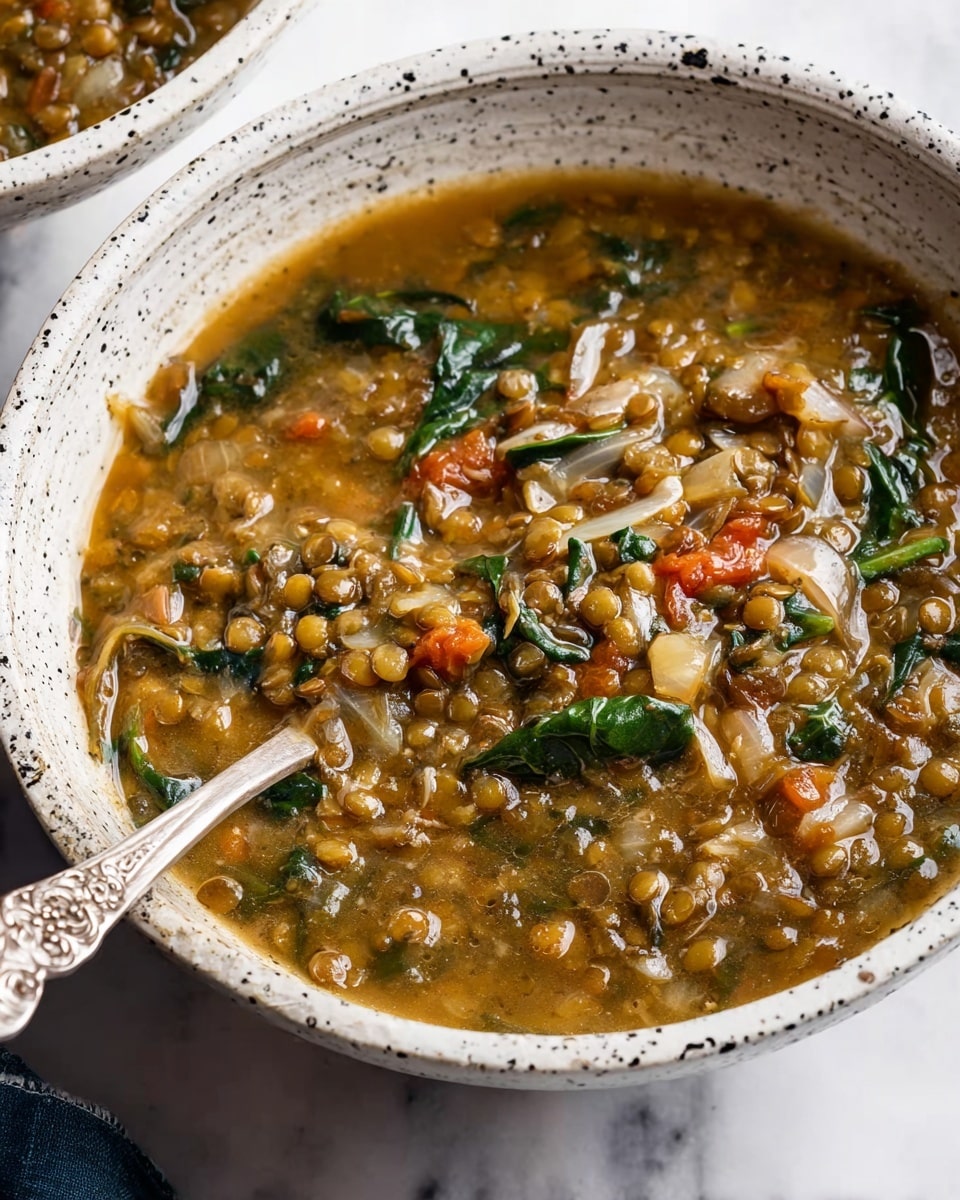
Garnishes
I love topping my bowl with crispy fried garlic and a drizzle of calamansi juice or lemon for a bright touch. Sometimes a sprinkle of chopped scallions or fresh chili slices adds a little zip that wakes up the whole dish. These small garnishes really make a difference and feel fun to include.
Side Dishes
This soup pairs so well with steamed white rice or garlic rice for a classic combo. For something different, I like serving it alongside sautéed greens or grilled eggplant for a simple veggie boost. It’s perfect comfort food that goes beautifully with just about any Filipino main dish or even on its own.
Creative Ways to Present
For special family dinners, I’ve served Ginisang Munggo in rustic soup bowls topped with fresh herbs and a side of toasted bread for dipping. Using colorful bowls and placing a small basket of freshly sliced banana blossoms or pickled vegetables nearby gives it a lovely homemade feel that guests always appreciate.
Make Ahead and Storage
Storing Leftovers
Once cooled, I transfer leftover Ginisang Munggo into airtight containers and keep them in the fridge. It stays delicious for up to 3 days, though sometimes I find it thickens quite a bit so I add a splash of water when reheating to loosen it back up.
Freezing
I’ve frozen this mung bean soup successfully a few times in individual portions. Just cool completely and place in freezer-safe containers. When thawing, it reheats beautifully on the stove with a little extra water—perfect for meal prepping busy weeks.
Reheating
Reheat gently in a saucepan over medium-low heat, stirring occasionally and adding water or vegetable broth as needed to return it to your preferred consistency. This prevents scorching and keeps the flavors bright, as opposed to nuking it quickly in the microwave.
FAQs
-
Can I use canned mung beans instead of dried for this Ginisang Munggo (Mung Bean Soup) Recipe?
You can, but canned mung beans are softer and already cooked, so you’ll want to adjust cooking times significantly. Since the recipe relies on simmering dried beans until tender, using canned mung beans means you only need to heat them through with the aromatics and broth. The texture might be a bit different but still tasty.
-
What can I substitute for malunggay leaves if I can’t find them?
Fresh spinach or kale are excellent substitutes and easily accessible at most grocery stores. Add them at the end of cooking to preserve their color and nutrients. Water spinach (kangkong) also works well if you want to keep a Filipino touch.
-
Is this Ginisang Munggo (Mung Bean Soup) Recipe suitable for vegans?
Absolutely! By using vegan chicken broth paste and vegan fish sauce or soy sauce, this recipe is fully vegan and packed with umami flavors. It’s a wonderful plant-based comfort food option that doesn’t compromise on taste.
-
How do I make the soup thicker or thinner?
To thicken, you can mash some of the cooked mung beans with your spoon or use an immersion blender for a creamier texture. To thin the soup, simply add more water or vegetable broth while simmering until you get your desired consistency.
Final Thoughts
At its heart, this Ginisang Munggo (Mung Bean Soup) Recipe feels like sharing a bowl of comfort with friends and family. It’s one of those dishes I go back to over and over because it’s easy, nourishing, and full of love in every spoonful. If you haven’t tried mung beans before, this is a fantastic introduction—and if you have, you’re going to enjoy this fresh, flavorful take. Grab those mung beans, warm up your pot, and let’s make some magic happen in your kitchen!
Print
Ginisang Munggo (Mung Bean Soup) Recipe
- Prep Time: 15 minutes
- Cook Time: 58 minutes
- Total Time: 1 hour 13 minutes
- Yield: 6 servings
- Category: Soup
- Method: Stovetop
- Cuisine: Filipino
- Diet: Vegan
Description
Ginisang Munggo is a comforting Filipino mung bean soup cooked with garlic, onions, ginger, tomatoes, and flavored with vegan chicken broth paste and vegan fish sauce. This hearty and nutritious dish is enhanced by malunggay (moringa) leaves, delivering a tasty and nourishing meal perfect for any day.
Ingredients
Main Ingredients
- 1 cup dried mung beans
- 8 cups water, divided (plus more as needed)
- 2 tablespoons oil
- 1 onion, peeled and sliced thinly or diced
- 8 garlic cloves, peeled, crushed, and minced
- 1-inch ginger, grated
- 2 ripe tomatoes, diced
- 2 tablespoons vegan chicken broth paste
- 1 tablespoon vegan fish sauce (or soy sauce)
- 1 big handful malunggay (moringa) leaves (or spinach), hard stems removed
- Salt and pepper, to taste
Instructions
- Prepare the mung beans: Sort through the mung beans carefully, discarding any discolored, shriveled beans, rocks, or dirt. Rinse them in cold water until the water runs clear and then drain well.
- Cook the mung beans: Transfer the mung beans to a large pot and add 6 cups of water. Bring to a boil over medium heat, then lower heat and simmer for 45 to 50 minutes or until the beans have softened and the skins have burst. Add more water if needed to keep the beans submerged.
- Sauté aromatics: Heat oil in another pot over medium heat. Add the onions, garlic, ginger, and a pinch of salt. Cook until tender and aromatic, about 4 minutes.
- Cook tomatoes: Add the diced tomatoes to the aromatics and cook while mashing with the back of a spoon until softened, approximately 3 minutes.
- Combine mung beans and seasonings: Add the cooked mung beans along with their cooking liquid, vegan fish sauce, and vegan chicken broth paste to the pot with sautéed aromatics and tomatoes. Mix well. Add more of the reserved 2 cups of water to adjust consistency as desired. Bring to a boil, then reduce heat to simmer for 10 minutes.
- Add malunggay leaves: Stir in the malunggay leaves and cook for an additional 1 minute until wilted.
- Season and serve: Taste the soup and adjust seasoning with salt and pepper as needed. Serve the mung bean soup hot for a wholesome meal.
Notes
- Malunggay (moringa) leaves can be substituted with spinach or kale if unavailable.
- Add more water during mung bean cooking to prevent sticking and to achieve preferred soup thickness.
- Vegan fish sauce can be replaced with soy sauce for a different but still umami flavor.
- Soaking mung beans for 1-2 hours prior to cooking can reduce cooking time.
- This dish pairs well with steamed rice for a complete meal.
Nutrition
- Serving Size: 1 cup
- Calories: 180 kcal
- Sugar: 3 g
- Sodium: 450 mg
- Fat: 5 g
- Saturated Fat: 0.7 g
- Unsaturated Fat: 4 g
- Trans Fat: 0 g
- Carbohydrates: 28 g
- Fiber: 8 g
- Protein: 11 g
- Cholesterol: 0 mg



